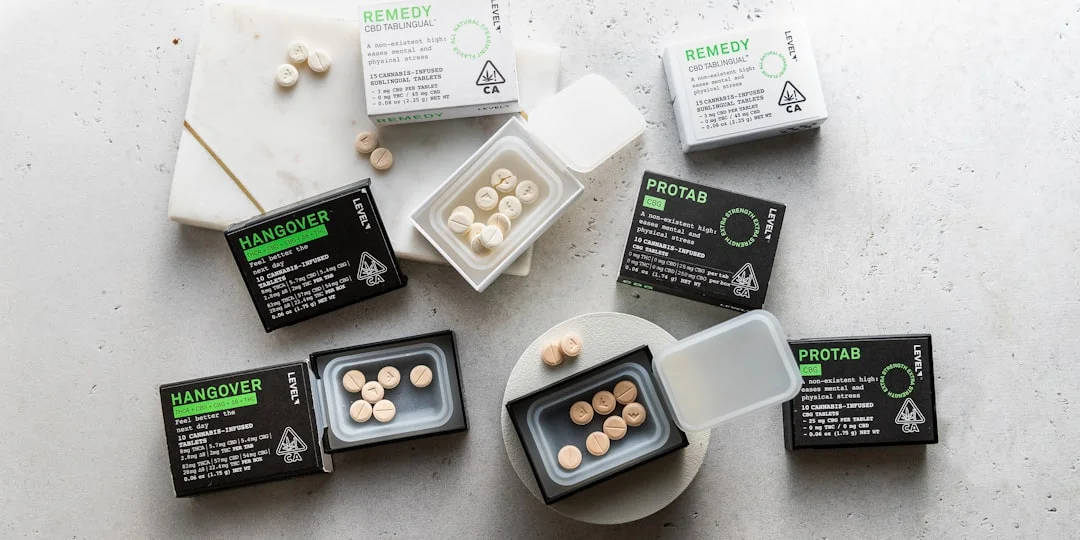Estimated Reading Time: 8 minutes
HHve you ever wondered how CBD, or cannabidiol, seems to offer such a wide array of potential benefits, from easing anxiety to promoting better sleep?
The secret lies in a complex, yet elegant system within your body called the endocannabinoid system, or ECS.
Understanding how CBD interacts with the endocannabinoid system is key to appreciating its potential.
Today, we’ll dive deep into this fascinating interaction, uncovering the science behind CBD’s effects and exploring how you might incorporate it into your wellness routine.
For years, I’d struggled with occasional bouts of anxiety.
I tried various methods – meditation, exercise, even prescription medications – but nothing seemed to provide consistent relief without unwelcome side effects.
Then, I began researching CBD, and the more I learned about the ECS, the more intrigued I became.
It felt like unlocking a hidden language within my own body.
This article is not intended to provide medical advice.
Always consult with a healthcare professional before making any changes to your health regimen.
Think of your ECS as a vast communication network, constantly working to maintain balance, or homeostasis, within your body.
It’s involved in regulating everything from mood and sleep to appetite and immune function.
The ECS comprises three main components: endocannabinoids, cannabinoid receptors, and enzymes.
The ECS plays a crucial role in maintaining this internal equilibrium.
When something throws your body off balance – stress, illness, or injury – the ECS steps in to help restore harmony.
Understanding this system is crucial to grasping how CBD interacts with the endocannabinoid system.
Unlike THC, the psychoactive compound in cannabis, CBD doesn’t directly bind to CB1 or CB2 receptors in the same way.

Instead, CBD interacts with the ECS in a more indirect manner.
This is one of the crucial aspects of how CBD interacts with the endocannabinoid system.
It’s like a helpful conductor guiding the orchestra, rather than playing a specific instrument.
CBD’s primary mechanism of action involves influencing the activity of the ECS in several ways.
One key way is by inhibiting the enzyme FAAH (fatty acid amide hydrolase), which breaks down anandamide.
By slowing down FAAH, CBD allows anandamide to linger in the system longer, potentially enhancing its effects.
CBD may also indirectly influence other receptors, such as serotonin receptors, contributing to its potential mood-boosting effects.
It’s also important to understand that the body is constantly working to maintain homeostasis. Think of it like a thermostat.
If your body temperature rises, your thermostat kicks in, turning on the AC to cool you down. If it drops, it turns on the heat.
The ECS works similarly.
This is why the way how CBD interacts with the endocannabinoid system can vary from person to person.
The body’s current state plays a significant role.
Because of its complex interaction with the ECS, CBD has been linked to a variety of potential benefits.
It’s important to remember that research is still ongoing, and more studies are needed to fully understand CBD’s effects.
However, preliminary findings are promising.
For instance, a friend of mine, Sarah, had suffered from chronic back pain for years. She tried countless treatments with little success.
After researching and trying CBD, she reported a significant reduction in pain, allowing her to regain some normalcy in her life.
Of course, the effects of CBD can vary, but Sarah’s experience illustrates the potential it holds for some people.

The market is flooded with CBD products, so choosing the right one can feel overwhelming. Here are some factors to consider:
When I first started using CBD oil, I made the mistake of buying a product without checking the third-party lab reports.
I found out the hard way that it contained significantly less CBD than advertised.
That experience taught me the importance of doing your research and choosing reputable brands.
It’s an essential step when you learn about how CBD interacts with the endocannabinoid system and how to find the best product for your needs.
Let’s delve deeper into the specific ways CBD interacts with the ECS, providing further insight into how CBD interacts with the endocannabinoid system:
Research suggests that CBD may interact with serotonin receptors, particularly the 5-HT1A receptor, which plays a role in mood regulation and anxiety.
This interaction might contribute to CBD’s potential to reduce anxiety and improve mood.
This area is still being explored, but the initial findings are quite promising.
While CBD doesn’t directly bind to CB1 and CB2 receptors in the same way as THC, it can indirectly influence their activity.
CBD may potentially affect the activity of these receptors, possibly by altering the way other compounds interact with them.
More research is needed to fully understand the intricacies of these interactions.
Beyond the ECS, CBD can interact with other receptor systems in the body.
For example, it interacts with TRP (transient receptor potential) channels, which are involved in pain perception and inflammation.
This diverse range of interactions further explains the wide-ranging effects that CBD may have.
There are many myths and misconceptions surrounding CBD. Let’s address a few to provide clarity.
One common misconception is that CBD is the same as THC. While both are cannabinoids, they have different effects on the body.
THC is psychoactive and produces a “high,” while CBD is not.

Moreover, understanding how CBD interacts with the endocannabinoid system helps to dispel such myths.
Another misconception is that CBD is a cure-all. While CBD shows great potential, it is not a miracle drug.
Its effects vary depending on the individual and the condition being addressed.
It’s important to set realistic expectations and discuss CBD use with a healthcare professional.
When considering CBD, it’s essential to adopt a holistic approach to wellness.
This means combining CBD use with other healthy habits, such as a balanced diet, regular exercise, and adequate sleep.
Consider it as one tool in your wellness toolbox, not a magic bullet.
This is key when you want to know how CBD interacts with the endocannabinoid system for maximum benefit.
It’s also wise to consult with a healthcare professional before using CBD, especially if you’re taking any medications.
They can help you determine a safe and effective dosage and assess any potential interactions.
Ultimately, responsible CBD use involves informed decision-making and prioritizing your overall health.
The field of CBD research is constantly evolving.
Scientists are actively investigating the ECS and how CBD interacts with the endocannabinoid system and its potential applications for various health conditions.
As research progresses, we can expect to gain a deeper understanding of CBD’s mechanisms of action and its potential benefits.
The future holds exciting possibilities for harnessing the power of CBD to enhance wellness.
For instance, ongoing studies are exploring the potential of CBD in treating neurological disorders, such as epilepsy and multiple sclerosis.
Other studies focus on the role of CBD in managing chronic pain, anxiety disorders, and sleep disorders.
The current studies are already expanding our understanding of how CBD can play a role in health and wellness.

Understanding how CBD interacts with the endocannabinoid system is the first step in navigating the world of CBD.
It is a fascinating interaction. CBD is a promising compound. It offers exciting potential.
However, it is also important to approach it with an open mind, seeking out credible sources and taking a responsible approach.
By educating yourself and consulting with healthcare professionals, you can make informed decisions about your health and potentially experience the benefits that CBD has to offer.
Remember, your journey toward wellness is unique. CBD might be a helpful tool, but it’s just one piece of the puzzle.
By combining CBD with a holistic approach to health, you can unlock a greater sense of well-being and live a healthier, more balanced life.
Ready to explore more health tips? Join our newsletter for weekly health insights!
Frequently Asked Questions
What is the endocannabinoid system (ECS)?
The ECS is a complex network within your body that helps regulate various functions, including mood, sleep, appetite, and immune response. It’s made up of endocannabinoids (naturally produced compounds), cannabinoid receptors (that these compounds bind to), and enzymes (that break down the compounds).
The ECS helps maintain homeostasis, or balance, in the body.
Does CBD get you high?
No, CBD is a non-psychoactive compound, meaning it does not produce the’high’associated with THC (tetrahydrocannabinol), the main psychoactive component of cannabis. CBD interacts with the ECS and other systems in the body differently than THC, leading to a range of potential benefits without the mind-altering effects.
How does CBD differ from THC?
While both CBD and THC are cannabinoids, they interact with the body in different ways.
THC directly activates CB1 receptors, producing the’high.’CBD, however, doesn’t bind directly to these receptors; instead, it influences the ECS indirectly, potentially affecting the activity of the ECS and other receptors like serotonin receptors, leading to different therapeutic effects.
CBD lacks psychoactive effects while THC does.
What are the different types of CBD products?
CBD products come in various forms. Full-spectrum CBD contains all the cannabinoids found in the cannabis plant, including trace amounts of THC (less than 0.3% in the US). Broad-spectrum CBD contains a range of cannabinoids but is THC-free. CBD isolate is pure CBD. The choice of product depends on your individual needs and preferences.
What are some of the potential side effects of CBD?
CBD is generally considered safe, but some people may experience side effects like dry mouth, diarrhea, reduced appetite, fatigue, or drowsiness. It’s crucial to start with a low dose and monitor how your body reacts.
Also, CBD can interact with some medications, so always consult a healthcare professional before starting CBD use, especially if you are currently taking any other medications.



